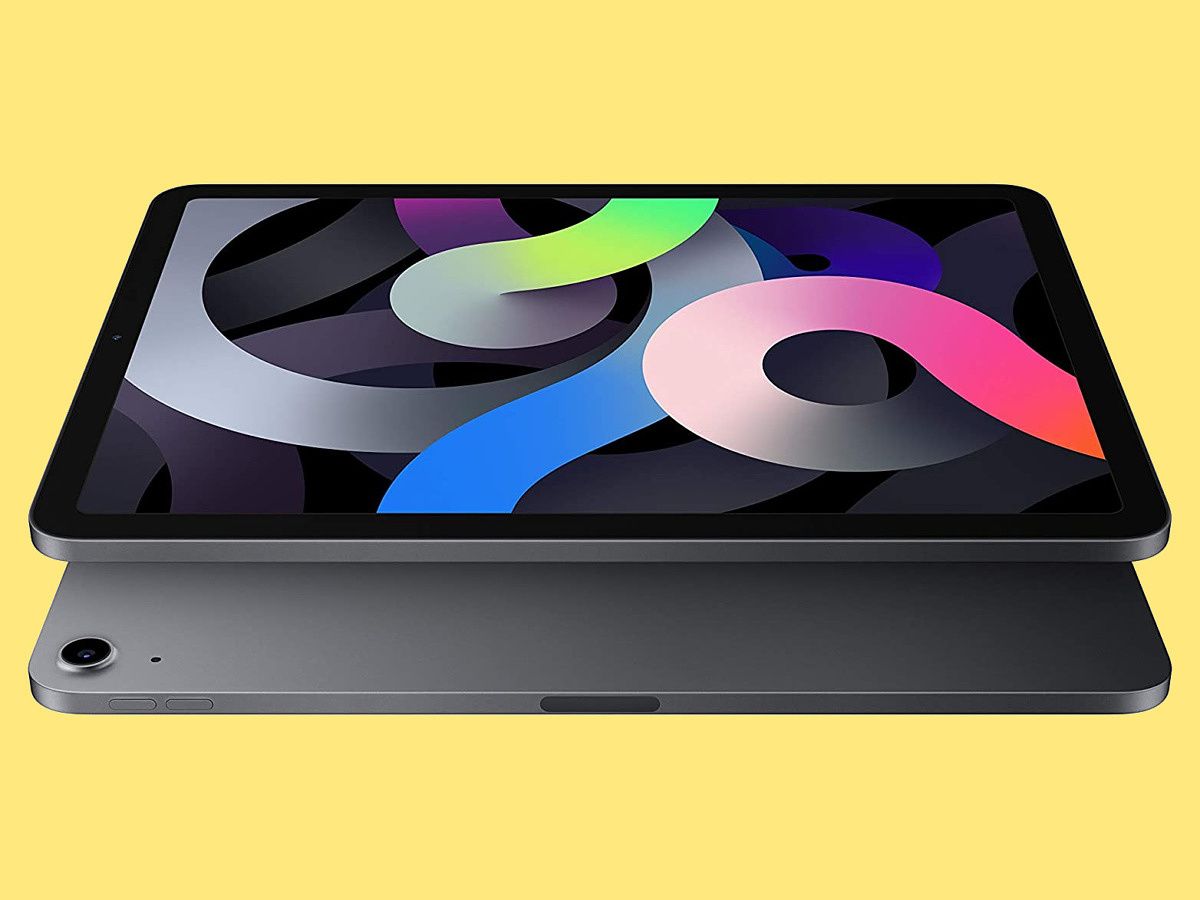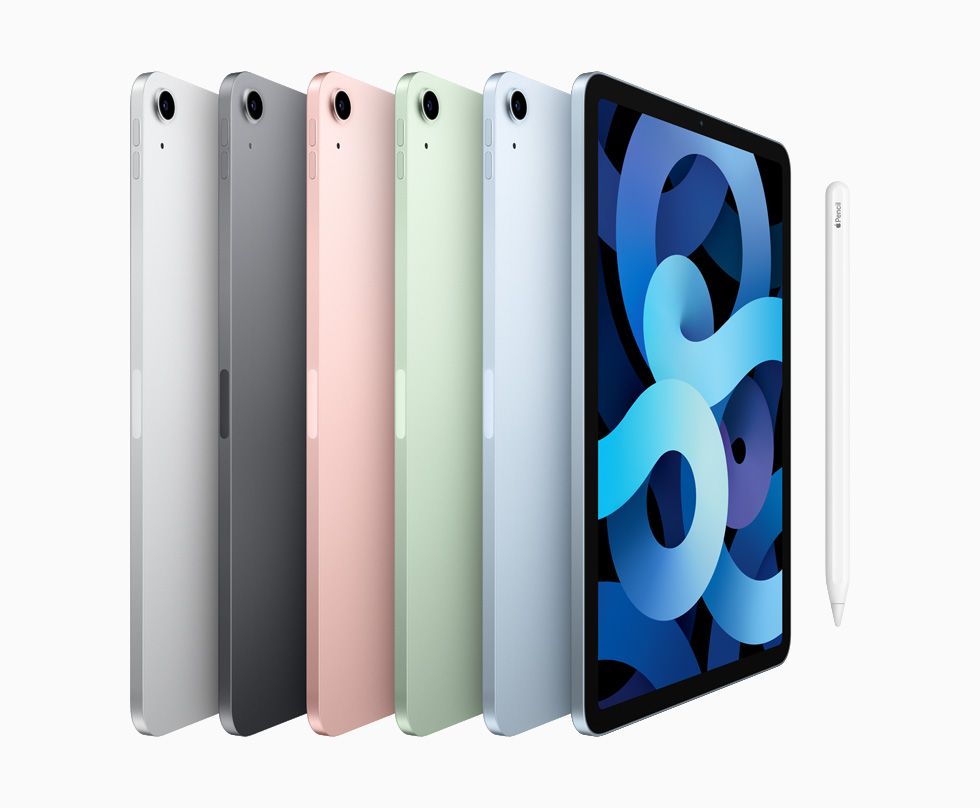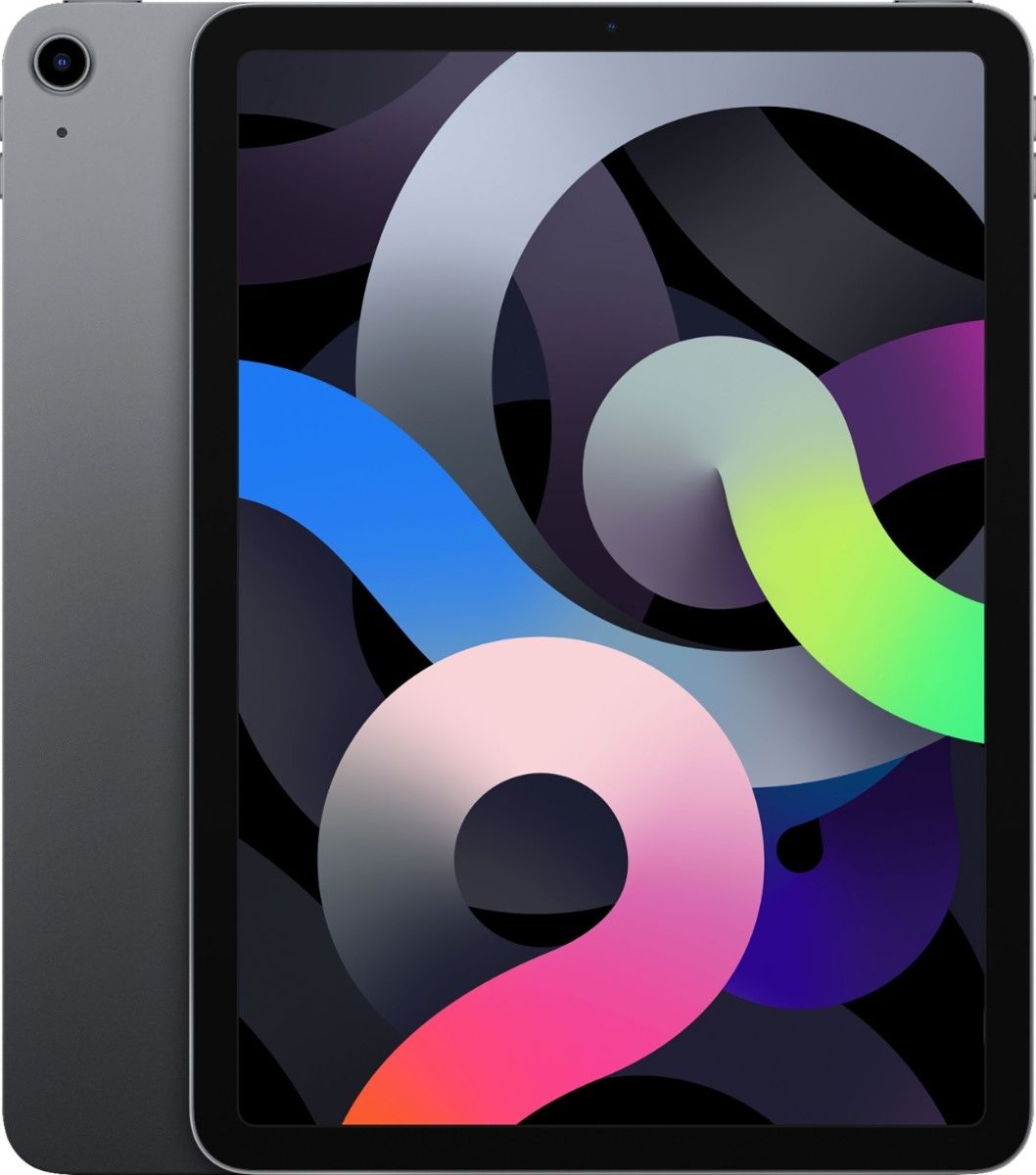A lot of companies have started offering cloud-based solutions for their services. As a result, the battle between “portable” and “capable” has never been so heated. Some people prefer having solid desktop setups in their (home) offices, while others, including me, would rather have a portable one. Microsoft and Apple offer devices for both usage cases, and the competition is getting intenser. This is the Surface Go 3 vs iPad Air 4th Gen, two portable yet mighty devices, head-to-head.
Navigate this article:
Microsoft Surface Go 3 vs. Apple iPad Air 4th Gen: Specifications
| Microsoft Surface Go 3 | Apple iPad Air 4th Gen | |
|---|---|---|
| CPU |
|
|
| Graphics |
|
|
| Body |
|
|
| Display |
|
|
| Ports |
|
|
| Storage |
|
|
| RAM |
|
|
| Battery |
|
|
| Audio |
|
|
| Camera |
|
|
| Connectivity |
|
|
| Color |
|
|
| Price |
|
|
Design: The Surface stands out!


Body
The iPad Air 4th Gen received a major redesign last year. Apple replaced the thick bezels with thinner ones to match the iPad Pro design. While they look similar now, it’s worth mentioning that the iPad Air doesn’t feature Face ID. It instead moves the Touch ID sensor from the (now non-existent) home button to the side button.
The iPad features a small camera bump on the back, but otherwise it’s a slim, minimalistic slab. It’s about 2 mm thinner than the Surface Go 3, but it doesn’t offer a kickstand. The kickstand makes it easy to use your Microsoft Surface without any cases, keyboards, or accessories attached. You just fix it in whatever position that works for you, and it’ll stay in place. To achieve a similar result on any iPad, you’d need a case or keyboard with a stand. Otherwise you’re going to have to hold your iPad at all times or place it horizontally on a plain surface.
Ports
Apple has become infamous for ditching ports on iDevices. This sacrifice comes in the name of minimalism. We agree, portless devices do look sleek, but they break functionality. Dongles don’t look good attached to any device, but average users are slowly shifting to alternative solutions. Depending on the cloud and going wireless is one way to do it, even though most power users would probably disagree.
The Surface offers a USB C port, in addition to the fans’ favorite — a 3.5 mm headphone jack — and a MicroSDXC Card Reader, accompanied by Surface accessory ports. So you won’t be needing as many dongles or cloud solutions if you go for the Surface.
Conclusion
In this round the Microsoft Surface Go 3 wins over Apple’s iPad Air 4th Gen in terms of functionality and ease of use (hardware-wise, not software). If you’re fine with having one USB C port and no kickstand, then the clean iPad offers a modern design that’s almost objectively more appealing than that of the Surface.
Display: The iPad shines in this round!


The iPad offers a 10.9″ Liquid Retina display with a 2360 x 1640 resolution at 264 pixels per inch (ppi). On the other hand, the Surface has a 10.5″ PixelSense display with a 1920 x 1280 resolution at 220 ppi. The bezels on the iPad aren’t as thick as those on the Surface, and the former has rounded corners, giving it a more gorgeous overall look.
The Air has a 4:3 aspect ratio, compared to 3:2 on the Surface. So in landscape orientation, the iPad has a taller screen than Microsoft’s. And the iPad is still usable in portrait orientation, due to how wide the screen is, both horizontally and vertically. As for the Surface, in portrait orientation it can look weird because it would be too narrow horizontally in that position.
The iPad Air 4th Gen clearly wins this round. It has the larger display with a better resolution and an aspect ratio that makes more sense.
Accessories: This one’s a tie!


When it comes to accessories, Apple and Microsoft offer similar options. Both the iPad Air and the Go 3 support keyboard attachments and some form of smart stylus. The Apple Pencil 2nd Gen costs $129, compared to $99 for Microsoft’s Surface Pen. However, Apple’s supports magnetic wireless charging when placed on the iPad’s edge. The Surface Pen is AAAA Battery powered, on the other hand. So the extra $30 is arguably worthwhile.
As for keyboard accessories, Apple has placed a whopping $179 price tag on the Smart Keyboard Folio, while Microsoft’s Type Cover only costs $99. While the the Folio has a stronger build, it’s still almost double the price of Microsoft’s version, and it doesn’t include a trackpad like that of the Surface.
It’s hard to state the winner of this round, simply because Apple includes more features (particularly when it comes to the Pencil, not the keyboard) and a better build quality. So it’s only fair to charge more for that. Microsoft offers more affordable options that lack some extras, but it also includes a trackpad for a lower price. So at the end, it really depends on the user and their specific needs and budget.
Capability: Another tie!

Performance
The entry model of the Surface Go 3 and the iPad Air both offer 4GB of RAM. But when it comes to the processors, the A14 Bionic chip outperforms the Intel chips. The iPad Air is theoretically more capable and energy-efficient, but we also have to keep in mind the software limitations.
Software
A limited operating system can paralyze one’s workflow, no matter how powerful the processor is. Here’s where the Surface dominates the iPad. iPadOS is just iOS in disguise — and I state this as a fan of Apple products in general. Yes, there are some iPadOS features and gimmicks that aren’t available on iOS, but at its core, it’s just a over-glorified mobile operating system.
I’ve used an iPad as a PC replacement before. A few months later, I found myself upgrading to a MacBook Air for this particular reason, even though I could theoretically do all of my work on iPadOS. The OS just isn’t very capable, not to mention being limited to installing iOS/iPadOS apps.
The Surface Go 3 runs Windows. This means you can install any (supported) Windows programs and use built in features that you’d find on Windows PCs. It isn’t yet another tablet.
Conclusion
If your job or studies revolve around reading, writing, or any other functionality that can be done through a mobile or web app, then an iPad Air could be your “PC.” But if you’d rather have a more stable OS that supports desktop apps, then the Surface Go 3 is what you’re looking for. It really depends on your needs and usage case. The iPad is theoretically faster, but iPadOS cripples it. Until Apple changes that (for the better), it’ll always be a disadvantage.
We’re considering this round a tie because the iPad beats the Surface, performance-wise. However, the Surface runs a desktop OS, which obviously gives it this win. Ultimately, this is very personal and subjective, depending on what a user is looking for specifically. We’re only laying out the facts here and highlighting strengths and weaknesses.
Finishes: Apple passes this one with flying colors!


This round is short, particularly because the Surface only comes in one color — Platinum. The iPad Air 4th Gen comes in five (!) colors:
- Silver
- Space Gray
- Rose Gold
- Green
- Sky Blue
If the device finish is something you’re picky about — and Platinum happens to be a shade you dislike — then your only option here would be the iPad Air. It comes in five different colors, including some “fun” ones to choose from.
Bottom Line
The Surface Go 3 and iPad Air 4th Gen are two very different devices made for different kinds of people. Despite their relatively similar “tablet” design, they each offer different features and capabilities. Which one is right for you is up to you personally. We have only made it easier for you to weigh the pros and cons before you go ahead and buy your shiny new slab!
The post Microsoft Surface Go 3 vs Apple iPad Air 4th Gen: Which is the better mainstream tablet? appeared first on xda-developers.
from xda-developers https://ift.tt/3EQs55q
via IFTTT


Aucun commentaire:
Enregistrer un commentaire